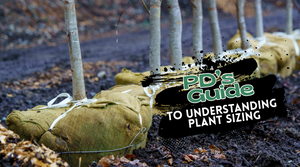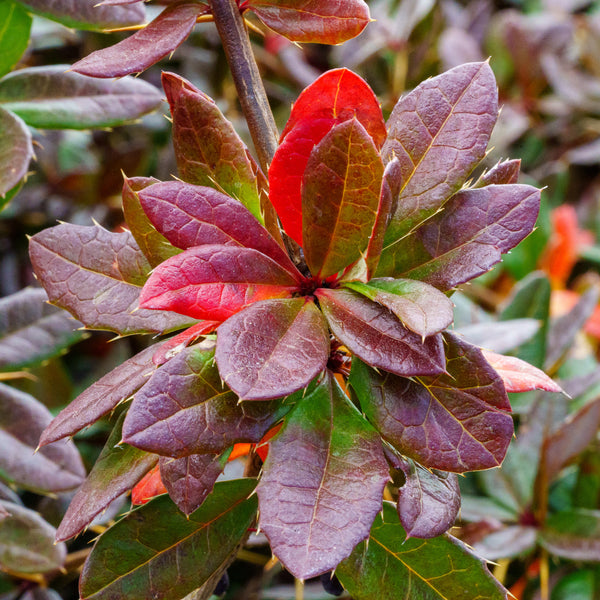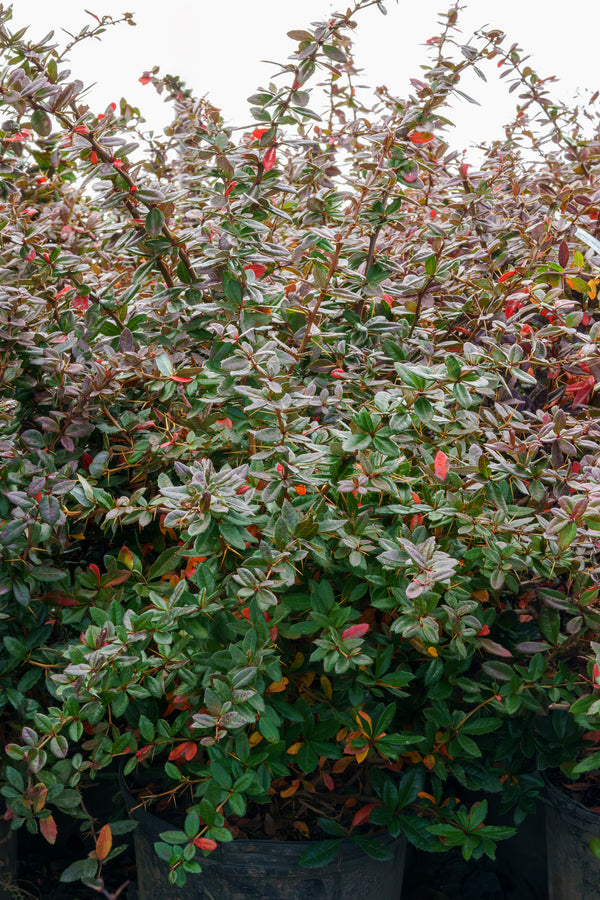William Penn Barberry
William Penn Barberry (Berberis x gladwynensis 'William Penn')
William Penn Barberry (Berberis x gladwynensis 'William Penn') is a broadleaf evergreen shrub prized for its bold foliage, natural deer resistance, and reliable year-round structure. This dense, arching cultivar features leathery, holly-like leaves that emerge bronze in spring, deepen to glossy green in summer, and return to an orange-bronze hue in colder months. In mid-spring, it produces clusters of golden-yellow flowers that contrast beautifully against the dark foliage, adding seasonal interest to the landscape.
Distinctive Features
Reaching 4 to 6 feet tall and wide, William Penn forms a graceful, rounded shape with slightly arching stems. The evergreen foliage offers excellent winter presence and is highly adaptable to a range of site conditions. Its spiny stems deter browsing animals, making it a dependable option for properties with heavy deer pressure. Over time, it develops into a durable, low-maintenance hedge or screen.
Growing Conditions
- Sun Exposure: Grows best in full sun to partial shade.
- Soil: Adapts to most well-drained soils, including sandy, loamy, and clay-rich substrates.
- Water: Moderate; prefers consistent moisture during establishment but is drought tolerant once mature.
- Humidity: Handles humid and coastal conditions well with good airflow.
- USDA Hardiness Zones: 5 to 8
Ideal Uses
- Evergreen Hedges: Dense habit makes it ideal for privacy and perimeter screening.
- Foundation Plantings: Adds structure and evergreen appeal near buildings and entryways.
- Security Plantings: Spiny stems provide a natural barrier against foot traffic and wildlife.
- Mixed Shrub Borders: Combines well with other broadleaf evergreens and flowering shrubs.
- Deer-Resistant Gardens: A practical choice for landscapes with browsing pressure.
Low Maintenance Care
- Watering: Deeply water during the first year; drought tolerant after establishment.
- Pruning: Prune lightly after flowering to shape and remove any dead wood.
- Fertilizing: Apply a balanced fertilizer in early spring for optimal growth and flowering.
- Pest and Disease Resistance: Highly resistant to deer and tolerant of urban conditions.
- Winter Care: Fully evergreen in most climates; mulch around base to protect roots in colder zones.
Why Choose William Penn Barberry?
- Year-Round Appeal: Evergreen foliage shifts in color throughout the seasons.
- Golden Spring Flowers: Bright yellow blooms add a cheerful accent in mid-spring.
- Low Maintenance: Tolerates pruning, drought, and a wide range of soil types.
- Natural Deterrent: Spiny stems help secure property lines and planting beds.
- Great for Screening: Dense growth provides privacy without excessive size.
For evergreen structure, strong color transitions, and natural deer resistance, William Penn Barberry delivers lasting value in both formal and informal landscapes.

OUR SIZING
Not sure what 2 inch B&B or 30 Gallon Clump really means? This guide breaks down all our plant size terms so you know exactly what to expect, whether you're ordering online or picking up at our nursery. From caliper measurements to container volumes, we've decoded our system to help you shop with confidence.

Plant Detectives Shipping Guide
Nationwide plant shipping made easy. Learn how we ship trees, shrubs, annuals and perennials. No order too big or too small. Fast, careful, and contractor-friendly.



